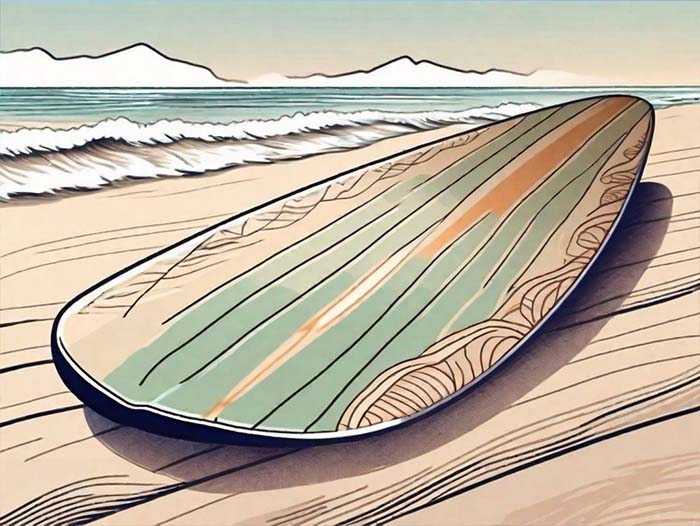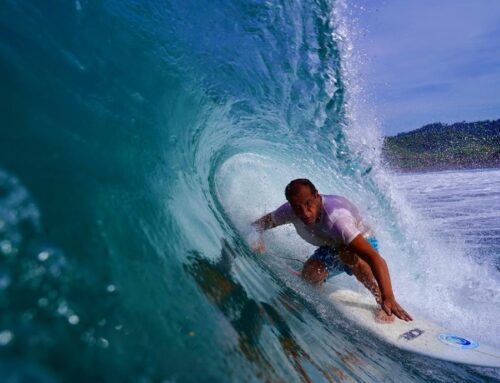Learn to Surf in Jaco: Get the Most Out of Your Surf Lessons
If you’ve ever wanted to experience the thrill of riding the waves, Jaco is the perfect place to start your surfing journey. With its beautiful beaches and ideal surf conditions, Jaco offers a fantastic environment for beginners to learn and improve their skills. In this article, we’ll guide you through the process of learning to surf in Jaco and help you get the most out of your surf lessons.
Understanding the Basics of Surfing
Surfing, a thrilling water sport that combines athleticism, skill, and a deep connection with nature, has captivated people for centuries. Before diving into the world of surfing, it’s essential to understand the basics, which will set the foundation for your journey into this exhilarating activity.
Surfing involves riding a surfboard on the face of a breaking wave, harnessing the power of the ocean to propel yourself across the water’s surface. The ultimate goal is to find the right balance and timing to catch the wave and ride it until it breaks, experiencing the sheer joy and freedom that comes with gliding effortlessly on the water.
To get started on your surfing adventure, you’ll need to familiarize yourself with the different parts of a surfboard. Each component plays a crucial role in your surfing experience, from the nose that helps with stability and maneuverability to the tail that provides control and responsiveness. The deck, where you stand, offers grip and stability, while the fins beneath the board enhance stability and maneuverability, allowing you to carve through the waves with precision.
Understanding the equipment you’ll be using is not only crucial for your safety but also for maximizing your performance in the water. By knowing how each part of the surfboard contributes to your overall experience, you’ll be able to make informed decisions when choosing the right board for different wave conditions and your skill level.
Additionally, it’s essential to learn some surfing terminology to communicate effectively with other surfers and instructors. Surfing has its own unique language, filled with terms that describe specific techniques, maneuvers, and wave characteristics. Terms like “pop up,” which refers to the swift movement from lying on the board to standing up, “duck dive,” a technique used to pass through an oncoming wave, and “cutback,” a maneuver that involves changing direction sharply on the face of the wave, are commonly used and will become part of your surfing vocabulary.
As you embark on your surfing journey, remember that mastering the basics is just the beginning. Surfing is a lifelong pursuit that offers endless opportunities for growth, challenge, and connection with the ocean. So, grab your surfboard, embrace the thrill of the waves, and let the adventure begin!
Preparing for Your Surf Lessons
Before hitting the waves, it’s essential to prepare yourself physically and mentally for your surf lessons.
Surfing is not just a sport; it’s a lifestyle. It requires a certain level of physical fitness and mental preparation. To truly enjoy the experience and make the most out of your surf lessons, it’s important to take the time to get your body and mind in the right state.
Physical Fitness for Surfing
Surfing demands a combination of strength, balance, and endurance. To build the necessary physical fitness, it’s important to incorporate specific exercises into your workout routine.
Targeting your core, arms, and legs is crucial for developing the strength needed to paddle out and catch waves. Engaging in activities like swimming, yoga, and balance training can greatly improve your surfing abilities. Swimming, in particular, is an excellent full-body workout that helps build endurance and cardiovascular fitness.
Additionally, flexibility plays a significant role in surfing. Stretching exercises, such as yoga or Pilates, can help loosen up your muscles and increase your range of motion. This will not only improve your performance on the board but also reduce the risk of injuries.
Remember, it’s not just about being physically fit; it’s about being surf-fit.
Mental Preparation: Overcoming Fear and Anxiety
For many beginners, stepping into the water and facing the waves can be an intimidating experience. It’s normal to feel fear and anxiety, but with the right mindset, you can overcome these challenges and embrace the thrill of surfing.
One effective technique for mental preparation is visualization. Close your eyes and imagine yourself successfully riding the waves, feeling the rush of adrenaline and the joy of being in harmony with the ocean. Visualize every detail, from paddling out to catching the perfect wave and riding it all the way to the shore. By visualizing success, you can boost your confidence and reduce anxiety.
Deep breathing exercises can also help calm your nerves before and during your surf lessons. Take slow, deep breaths, inhaling through your nose and exhaling through your mouth. This technique not only relaxes your body but also focuses your mind, allowing you to stay present and fully enjoy the experience.
In addition to deep breathing, meditation can be a powerful tool for mental preparation. Find a quiet place, close your eyes, and focus on your breath. Let go of any distracting thoughts and allow yourself to be fully present in the moment. Meditation can help you cultivate a sense of calmness and clarity, enabling you to face any challenges that may arise during your surf lessons.
Remember, surfing is not just about conquering the waves; it’s about connecting with nature and embracing the freedom that comes with riding the ocean’s energy. By preparing yourself physically and mentally, you’ll be ready to embark on this incredible journey and experience the joy of surfing to its fullest.
Choosing the Right Surf School in Jaco
When it comes to learning to surf, finding the right surf school is crucial. Here are some factors to consider when selecting a surf school in Jaco:
Factors to Consider When Choosing a Surf School
- Experience and reputation of the instructors: Look for surf schools with experienced instructors who have a good track record of teaching beginners.
- Safety measures: Ensure that the surf school prioritizes safety and provides all the necessary equipment, including surfboards and wetsuits.
- Class sizes: Smaller class sizes allow for more personalized attention and a better learning experience.
- Student reviews and testimonials: Read reviews and testimonials from previous students to get an idea of their experiences with the surf school.
What to Expect from a Good Surf School
A reputable surf school will provide a structured curriculum that covers the fundamental skills needed to surf safely and confidently. Instructors should focus on proper techniques, ocean awareness, and respect for the environment.
Additionally, a good surf school will teach you about wave selection, paddling techniques, and how to read the ocean conditions. These skills will allow you to navigate the waves effectively and increase your chances of catching and riding them successfully.
Maximizing Your Surf Lessons
Once you’ve chosen the right surf school, it’s time to make the most of your lessons. Here are some tips to improve your surfing technique:
Tips to Improve Your Surfing Technique
- Practice your paddling: Paddling is a fundamental skill in surfing. Work on your paddling technique to increase your speed and efficiency in the water.
- Perfect your pop up: The pop-up is the essential move to get up on your board quickly. Practice the motion on land to build muscle memory before heading into the water.
- Develop your balance: Balance is crucial when riding the waves. Practice exercises such as yoga and balance boards to improve your stability on the surfboard.
Common Mistakes to Avoid in Surf Lessons
While learning to surf, it’s natural to make mistakes. However, being aware of common errors can help you progress faster. Some common mistakes to avoid include:
- Focusing too much on standing up and neglecting other skills.
- Being too tense and rigid on the board, making it difficult to maneuver.
- Not paddling hard enough to catch the wave.
Beyond the Lessons: Independent Surfing in Jaco
Once you’ve gained confidence and proficiency through your surf lessons, you’ll be ready to explore independent surfing in Jaco.
Best Surfing Spots in Jaco for Beginners
Jaco offers several excellent surfing spots for beginners. The southern end of the beach is usually a good starting point, with smaller and more manageable waves. As you progress, you can venture to nearby spots like Playa Hermosa and Playa Herradura for more challenging waves.
Safety Tips for Independent Surfing
As you transition to independent surfing, it’s crucial to prioritize safety. Here are some safety tips to keep in mind:
- Always surf with a buddy or in the presence of other surfers.
- Be aware of your surroundings and potential hazards like rocks or strong currents.
- Check the weather and surf conditions before heading out.
- Wear appropriate safety gear, including a leash and rash guard.
Learning to surf in Jaco can be an empowering and exhilarating experience. By understanding the basics, preparing yourself physically and mentally, choosing the right surf school, and maximizing your surf lessons, you’ll be well on your way to catching waves and enjoying the incredible adventure of surfing. So grab your surfboard, hit the waves, and embrace the stoke of becoming a surfer in beautiful Jaco!

